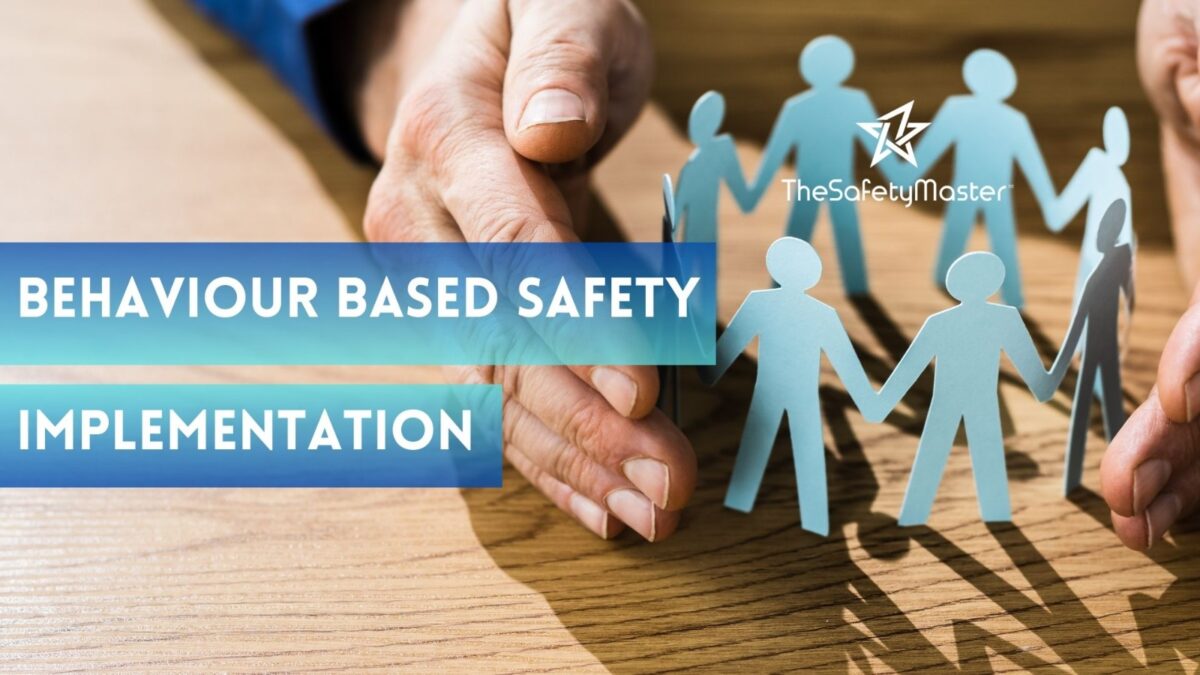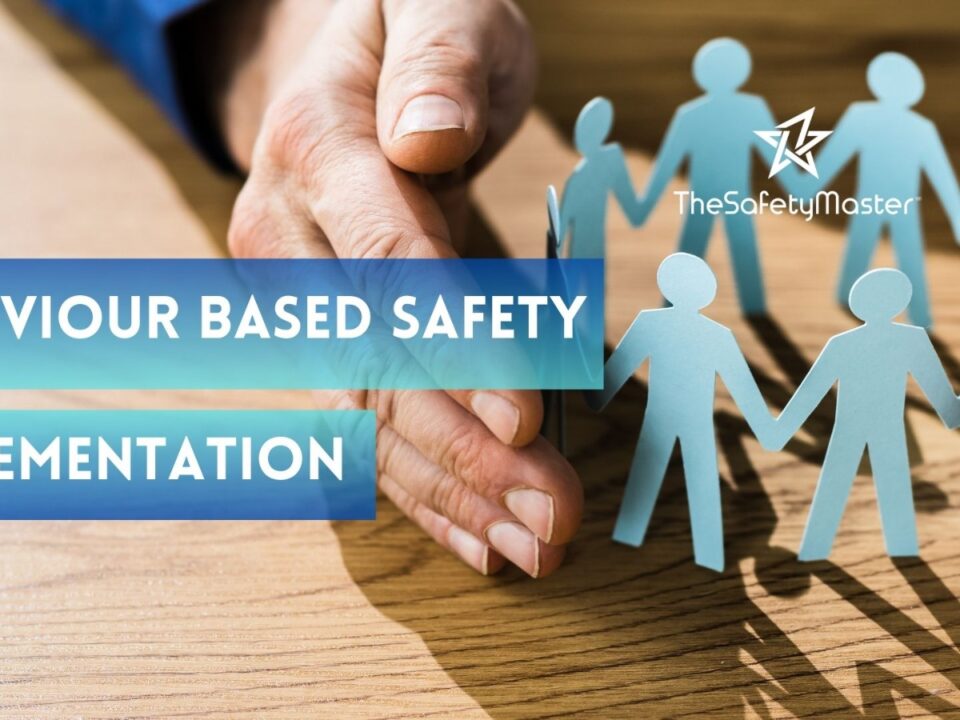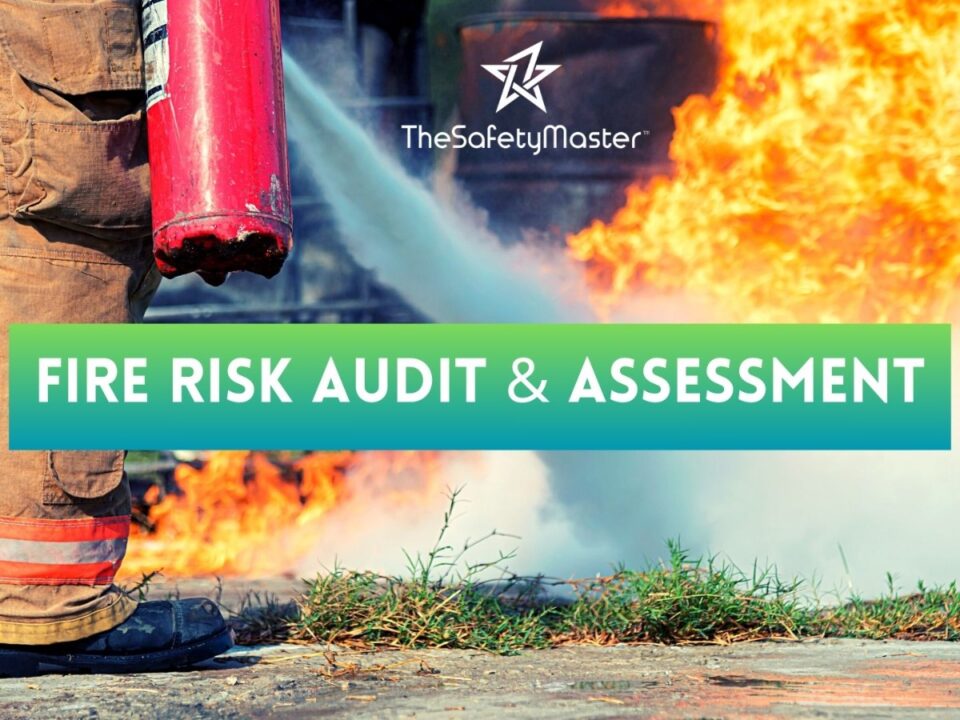BIS 14489 Safety Audit: Mitigating Potential Risks and Strengthening Safety Measures in Your Organization

BBS Implementation for Safety Culture Transformation for Zero Incident
January 24, 2024
Forklift Safety: Guidelines for Operating and Working Around Forklifts on Construction Sites – The Safety Master
February 9, 2024In this article, we delve into the critical topic of the BIS 14489 Safety Audit. As organizations strive to prioritize safety and mitigate potential risks, this comprehensive audit plays a crucial role in identifying vulnerabilities and strengthening safety measures. Join us as we examine the core objectives of the audit, its impact on organizations, and the vital steps to ensure compliance. Expect to gain a deeper understanding of the audit process, learn key strategies for risk mitigation, and discover how this powerful tool can revolutionize safety in your organization. Unlock the path to a safer future with our expert insights and practical advice.
Introduction
Welcome, esteemed readers, to a compelling exploration of BIS 14489 Safety Audit—an essential element in safeguarding your organization’s well-being. In today’s fast-paced and ever-evolving business landscape, ensuring the safety and security of employees and assets has become paramount. However, effectively identifying potential risks and establishing robust safety measures can be a daunting task. Fear not! This comprehensive article aims to equip you with the knowledge and strategies needed to navigate this critical terrain confidently. Within these pages, we will delve into the intricacies of BIS 14489 Safety Audit—unravelling its significance and providing you with valuable insights on conducting successful audits within your organization. Brace yourselves for an enlightening journey where we uncover potential risks lurking in the shadows while unveiling strategies to fortify your safety measures. By delving into this subject matter, we promise to empower you with practical steps towards mitigating risks effectively—thus enabling you to foster a safer work environment for all
Understanding the Importance of Safety Audits
Safety audits play a vital role in safeguarding organizations and their employees from potential risks and hazards. These audits provide an opportunity to assess the effectiveness of existing safety measures, identify areas of improvement, and mitigate potential risks that could lead to accidents or injuries. By conducting regular safety audits, organizations demonstrate their commitment towards creating a safe and healthy work environment. Safety audits go beyond mere compliance with regulations; they enable organizations to proactively identify and address potential risks before they escalate into serious incidents. By thoroughly examining all aspects of safety management systems, including policies, procedures, training programs, equipment maintenance, and employee engagement, safety audits help ensure that all necessary measures are in place to prevent accidents.
In addition to enhancing workplace safety, safety audits can also have a positive impact on overall organizational performance. By fostering a culture of safety and consistently improving safety measures based on audit findings, organizations can enhance productivity by reducing downtime due to accidents or injuries. Furthermore, employees feel valued when their well-being is prioritized by the organization, leading to increased morale and job satisfaction.
Ultimately, understanding the importance of safety audits provides organizations with an opportunity to strengthen their commitment towards employee well-being while simultaneously boosting operational efficiency. By embracing these proactive measures and continuously striving for improvement based on audit findings, businesses can create an environment where employees thrive both personally and professionally.
The Basics of BIS 14489 Safety Audit
The Basics of BIS 14489 Safety Audit: In the pursuit of creating a safe and secure environment within your organization, it is imperative to understand the fundamentals of a BIS 14489 Safety Audit. This audit serves as a comprehensive evaluation tool to identify potential risks and ensure robust safety measures are in place. Going beyond mere compliance, this audit harnesses the power of proactive risk management.
At its core, BIS 14489 Safety Audit focuses on four key pillars: hazard identification, risk assessment, control implementation, and monitoring and review. By meticulously examining these areas, organizations can gain valuable insights into their safety landscape and take necessary actions for mitigation. This holistic approach ensures that no stones are left unturned when it comes to enhancing safety protocols.
By embracing the principles of BIS 14489 Safety Audit, organizations foster a culture where safety becomes ingrained in every aspect of their operations. It empowers employees to take ownership of their own well-being and provides them with the confidence that their organization prioritizes their safety above all else. Such commitment not only boosts morale but also enhances productivity, ultimately leading to a thriving work environment where success is built on a foundation of security and well-being.
Identifying Potential Risks in Your Organization
Identifying Potential Risks in Your Organization: Within the realm of safety audits, one crucial phase is the identification of potential risks lurking within your organization. This process involves a meticulous examination of various aspects, ranging from physical hazards to operational vulnerabilities. By carefully scrutinizing every nook and cranny of your workplace, you can unveil hidden dangers and take proactive measures to mitigate them.
Consider the physical environment: Are there any slippery floors, poorly maintained equipment, or inadequate signage alerting employees to potential hazards? Furthermore, delve into operational risks by assessing work processes and procedures. Are there any gaps in training programs or protocols that could lead to accidents? Additionally, evaluate external factors that may pose threats such as natural disasters or security breaches. By conducting a comprehensive exploration of these areas, you empower your organization to address risks head-on and create a safer working environment for all.
Remember, identifying potential risks should not be viewed as a daunting task but rather an opportunity for growth. Each risk identified brings with it the chance to implement innovative solutions tailored to enhance safety measures. Embrace this exploration with an optimistic mind set, knowing that by identifying risks today, you are paving the way for a brighter tomorrow where safety becomes an intrinsic part of your organizational culture.
Establishing Effective Safety Measures
Establishing Effective Safety Measures: Within any organization, establishing effective safety measures is paramount to ensuring the well-being of employees and preventing potential risks. These measures serve as a protective shield, safeguarding individuals and the organization from harm. To achieve this, a comprehensive approach must be taken.
Firstly, it is crucial to conduct thorough risk assessments that identify potential hazards specific to the organization’s operations. This could include machinery malfunctions, hazardous materials handling, or workplace ergonomics. By understanding these risks, appropriate safety protocols can be put in place.
Secondly, organizations should develop clear safety policies and procedures that are communicated effectively to all employees. This involves creating comprehensive manuals outlining safety guidelines for different departments and job roles. Regular training sessions should also be conducted to educate employees about these measures and empower them with knowledge.
Lastly, fostering a strong safety culture within the organization is vital for long-term success. Encouraging open communication channels where employees can report unsafe conditions or near-miss incidents promotes a proactive approach to safety. Recognizing and rewarding individuals who actively contribute to maintaining a safe work environment further reinforces this culture.
By establishing effective safety measures in your organization, you not only protect your most valuable asset – your workforce – but also create an environment where everyone feels secure and valued. Remember: prioritizing safety today ensures a brighter future for all involved in your organization’s endeavours.
Steps to Conducting a Successful BIS 14489 Safety Audit
In order to conduct a successful BIS 14489 Safety Audit, it is crucial to follow a systematic approach that ensures comprehensive coverage of all safety aspects within your organization. The first step involves establishing clear objectives and defining the scope of the audit. This includes identifying the areas, processes, and departments that will be assessed during the audit. Once the objectives are outlined, it is essential to gather relevant data and documentation related to safety policies, procedures, incident reports, training records, and equipment maintenance logs. This information provides a solid foundation for evaluating the effectiveness of existing safety measures.
Next, conducting thorough inspections and observations across different areas of the organization is imperative. This involves walking through workspaces, reviewing work practices, assessing equipment condition and usage, and engaging with employees to better understand their perception of safety culture.
To ensure accuracy and consistency in the assessment process, it is advisable to utilize standardized checklists or questionnaires specifically designed for BIS 14489 Safety Audits. These tools assist auditors in capturing vital information while maintaining objectivity.
By following these steps diligently and involving key stakeholders at each stage of the audit process, organizations can not only identify potential risks but also develop robust action plans that mitigate those risks effectively. Ultimately, a successful BIS 14489 Safety Audit helps create a safer working environment where employees thrive while fostering productivity and organizational growth.
Engaging Employees and Promoting Safety Culture
Engaging Employees and Promoting Safety Culture: Inculcating a strong safety culture within an organization requires active participation and engagement of every employee. It is not merely about enforcing rules and regulations, but about fostering a collective responsibility towards safety. Effective communication channels can be established to encourage open dialogue on safety concerns, enabling employees to voice their opinions and suggestions freely. By involving employees in the decision-making process regarding safety measures, they develop a sense of ownership and become more committed to upholding safety standards.
Creating a positive work environment that nurtures a safety-conscious mind set is vital. Implementing regular training sessions that emphasize the importance of safe practices can empower employees with the knowledge and skills needed to identify potential risks and take appropriate preventive actions. Furthermore, recognizing and rewarding individuals or teams for their contributions towards enhancing safety not only promotes healthy competition but also instils a sense of pride among the workforce.
Building trust between management and employees is essential for establishing an effective safety culture. Managers should lead by example, following all safety protocols themselves while encouraging others to do the same. Open lines of communication should be maintained so that employees feel comfortable reporting any concerns or hazards they come across without fear of retribution. By fostering an environment where everyone feels valued and heard, organizations can cultivate a robust safety culture that ensures the well-being of all its members.
Remember, when it comes to promoting safety culture, it’s not just about compliance; it’s about creating an atmosphere where everyone feels responsible for each other’s safety. Together, we can foster an environment where incidents are minimized, productivity flourishes, and every individual returns home safely at the end of each day – because nothing is more important than human lives
Utilizing Technology in Safety Audits
Incorporating technology into safety audits can revolutionize the way organizations identify and mitigate potential risks. With the advancement of digital tools, automation, and data analytics, safety audits are now more efficient, comprehensive, and accurate than ever before. One innovative technology that has gained traction in safety audits is the use of drones. These unmanned aerial vehicles provide a unique perspective, enabling auditors to inspect hard-to-reach areas and assess potential hazards from above. Additionally, drones equipped with advanced cameras and sensors can capture high-resolution images and collect real-time data, allowing auditors to analyse findings with precision.
Moreover, organizations are leveraging cutting-edge software solutions to streamline their safety audit processes. Intelligent audit management systems not only centralize data but also automate tasks such as scheduling inspections, assigning corrective actions, and tracking their progress. This not only saves time but also ensures a systematic approach to addressing identified risks.
By embracing technology in safety audits, organizations can not only enhance efficiency but also improve their overall safety performance. The ability to gather accurate data quickly enables proactive risk management, leading to the implementation of effective preventive measures. Ultimately, this integration of technology empowers organizations to create safer work environments for employees while fostering a culture that prioritizes well-being and encourages continuous improvement.
Analysing and Addressing Audit Findings
Once the BIS 14489 safety audit has been conducted, the crucial step of analysing and addressing the findings begins. This phase requires careful attention to detail and a comprehensive understanding of the audit results. Each finding must be thoroughly examined in order to determine its significance in relation to organizational safety. During this process, it is imperative to identify patterns or common themes among the audit findings. By doing so, organizations can gain valuable insights into systemic issues that may be compromising safety measures. This holistic approach enables a targeted response, focusing on improving overall safety culture rather than solely rectifying individual discrepancies.
Moreover, addressing audit findings should not be seen as punitive but as an opportunity for growth and improvement. By fostering a positive mind set towards these findings, organizations can create an environment where employees feel empowered to propose innovative solutions and actively contribute to enhancing safety protocols. Emphasizing collaboration and learning from mistakes can further strengthen morale and bolster a sense of collective responsibility for maintaining a safe work environment.
In conclusion, analysing and addressing BIS 14489 safety audit findings requires meticulous examination and an open-minded approach towards discovering underlying issues. By viewing these findings as catalysts for positive change rather than shortcomings, organizations can foster an atmosphere of continuous improvement while ensuring the well-being of their employees remains at the forefront of their operations.
Developing Action Plans for Risk Mitigation
In this crucial phase of the BIS 14489 Safety Audit, the focus shifts from simply identifying potential risks to devising concrete action plans for their mitigation. It is here that the true efficacy of your safety measures will be tested. To begin, analyse the audit findings and prioritize risks based on their severity and likelihood. This will help you allocate resources effectively and tackle the most critical hazards first. Next, collaborate with key stakeholders from different departments to develop tailored action plans for each identified risk. These plans should not only outline specific steps to be taken but also assign responsibilities to ensure accountability. Remember, effective risk mitigation requires a proactive approach and an understanding that safety is a collective effort.
To inject optimism into this process, highlight success stories from other organizations that have successfully implemented similar action plans and reaped measurable benefits in terms of enhanced safety standards and employee well-being. By showcasing these positive outcomes, you inspire confidence in your team that by diligently executing the action plans, they can create a safer work environment for everyone involved
Incorporating Continuous Improvement Strategies
Incorporating Continuous Improvement Strategies: Embracing a culture of continuous improvement is vital for organizations invested in enhancing safety measures. By adopting this mind set, companies can proactively identify areas of improvement and implement effective strategies to minimize risks. One powerful approach involves regular safety meetings where employees can openly share their experiences, ideas, and concerns. This collaborative environment fosters innovation and empowers everyone to contribute to the enhancement of safety protocols.
Furthermore, organizations can leverage technology to support continuous improvement efforts. Implementing incident reporting systems that allow real-time data collection and analysis can provide valuable insights into potential risks and trends. This enables proactive decision-making and the swift implementation of preventive measures. Moreover, conducting periodic safety audits ensures compliance with regulations while creating a feedback loop for ongoing improvements.
By integrating continuous improvement strategies into safety initiatives, organizations instil a sense of optimism among employees. Through consistent evaluation and evolution of safety protocols, companies demonstrate their commitment towards creating a safer work environment. This not only boosts employee morale but also cultivates a culture where everyone feels valued as active contributors to organizational growth and well-being.
Conclusion
In conclusion, the BIS 14489 Safety Audit serves as a crucial tool in mitigating potential risks and strengthening safety measures within your organization. By systematically identifying and addressing vulnerabilities, you pave the way for a safer work environment that ultimately promotes the well-being of your employees. With a dedicated commitment to engaging employees and fostering a safety culture, coupled with the utilization of technology and continuous improvement strategies, you have all the necessary ingredients to create a thriving organization where safety is paramount. Embrace this opportunity to safeguard your workplace, and let the spirit of safety guide your every action.




